Are caravan tyres the same as car tyres?
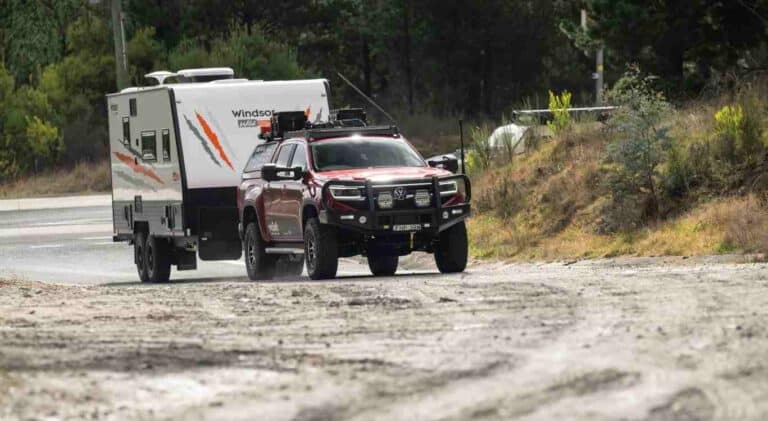



Fun fact – trucks with semi-trailers have three types of tyres: steer, drive and trailer, each optimised for a specific role. Caravans are trailers, too, so is the same true of vans and tow vehicles?
First, let’s explore the anatomy of truck tyres. A truck’s steer tyre is designed to, well, steer. It’s also the first tyre to hit water, so it needs to be good at water dispersal, and it’s the tyre that most affects cabin comfort.
Drive tyres are under a lot of stress as not only do they transmit power to the road, but they also need to handle a lot of weight. Trailer tyres need to handle scrubbing (sliding sideways as the truck turns), and be fuel-efficient, as well as carry a heavy load. Noise and ride comfort isn’t so important.
So does this logic apply to caravans? Yes, so there is an argument for fitting specialised trailer tyres, and they do exist. Like truck trailer tyres, ST “Special Trailer” tyres prioritise load carrying and sidewall stiffness over grip, ride comfort and noise. Car makers have to pass stringent noise tests, and tyres are a big part that. But there are no such regulations for trailers.
However, most caravanners just fit the same tyres that would otherwise go on the tow car on their van. They do this for two reasons. First, the differences between the caravan and the tow car are not as great as truck and trailer and with lower mileage and total fuel costs, it’s less important to optimise each set of wheels. Second, from an off-road perspective, it’s a good idea to run the same tyre on the trailer as the tow car so that if you run into trouble, you can swap the tyres from the vehicle to and from the caravan.
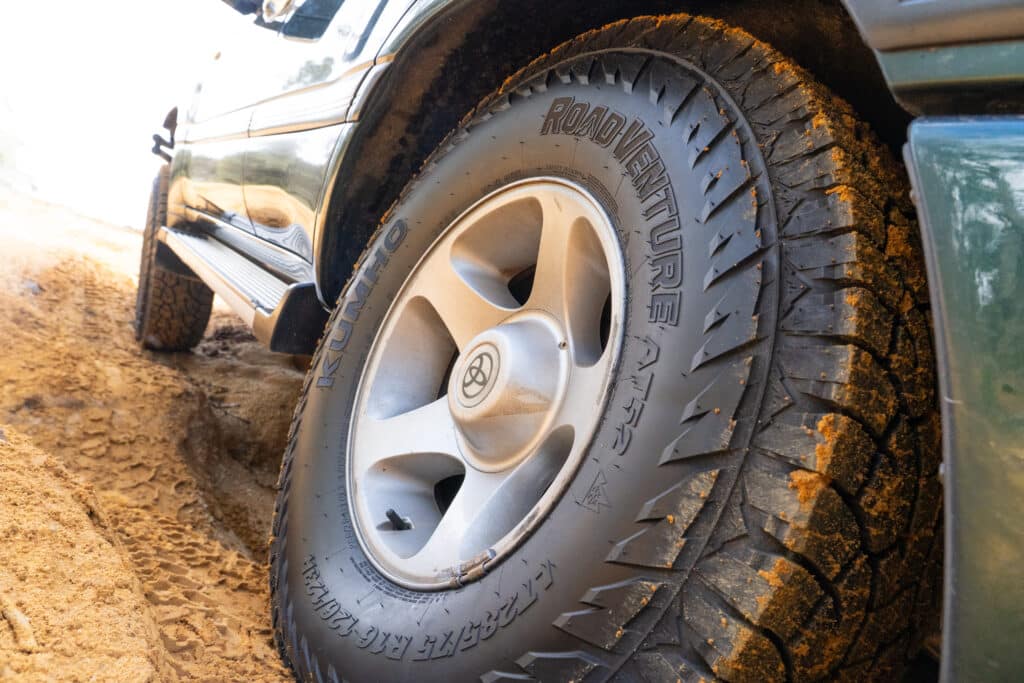
Your number one consideration when fitting caravan tyres is to meet the various specifications on the trailer’s compliance placard, found on or around the drawbar. These specifications are as follows:
The load the tyre is designed to handle (load index). You want a tyre that meets or exceeds the minimum load rating. For example, my MDC 12+ comes with tyres with a load rating of 1550kg, which is a rating of 123. A rating of 122 is 1500kg, 124 is 1600kg, and so on (although not always in a 50kg leap).
The placard should show the tyre speed the trailer was designed for, expressed as a letter. For example, ‘N’ for 140km/h, ‘J’ for 100km/h, and ‘P’ for 150km/h. You must not fit tyres with a speed rating lower than the placard.
Next we come to tyre size. In the case of my MDC 12+, the size is 265/75/R16. The 265 denotes the overall width of the tyre in millimetres, the 75 is the sidewall height expressed as a percentage of width (265 x 0.75 = 199mm), and the 16 is the diameter of the rim in inches. Yes, mixed measurements! That gives us an overall diameter of 199mm x 2 for two sidewalls (398mm), plus the 16 inch rim (406mm), totalling 804mm. But to confuse things further, we usually speak of overall tyre diameter in inches, so 804mm = 31.6 inches!
Realistically, 99 per cent of people are going to simply replace their caravan tyres with new ones of identical specification if not brand, so you can simply say to your tyre shop “new tyres on that please”, and not worry about any specs. However, there is one change you might want to consider and that’s tread pattern, which is applicable to off-road vans.
Here are some facts. One, most off-road vans, aren’t. Two, they will never be used as such. And three, the mud tyres fitted as standard on off-road vans are overkill and inappropriate in 99 per cent of cases.
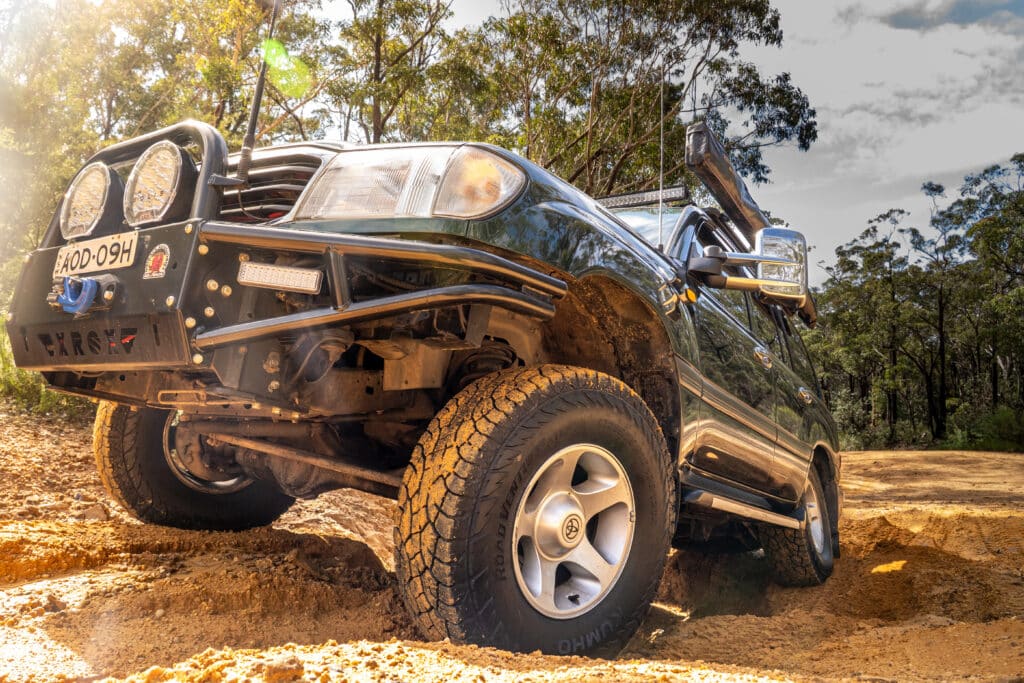
By ‘off-road’ I mean terrain requiring low range and the clearance of a 4×4 to effectively traverse. This terrain is extremely difficult to tow trailers across, and few people will ever try. ‘Off-road’ vans might look Insta-tuff with their raised suspension, chequer plate and mud tyres, but they are heavy, wide and vulnerable to damage. If you really want to go properly off road, then pull a camper trailer the same width as the tow car, which will also be much lighter. That said, I and others do pull caravans off road, it’s just a lot of work and I stick to places that are relatively easy to access. What you see on the drama factory of YouTube traveller vlogs doesn’t reflect reality.
Now for the tyres. In order to promote a rough, tough look, off-road vans are fitted with (often cheap) mud-terrain tyres. Mud tyres have an open tread pattern and grip well off road, but are noisy, heavy and handle relatively poorly on bitumen. That’s the tradeoff. Road tyres are designed for bitumen, and somewhere between the two are all-terrain tyres, and ‘rugged-terrain’ tyres, which are a tougher variant of all-terrains. The world didn’t need another tread pattern classification, but here we are.
Here is an example of tyre tread patterns from the Kumho range which demonstrate road, all-terrain and mud-terrain tread patterns:
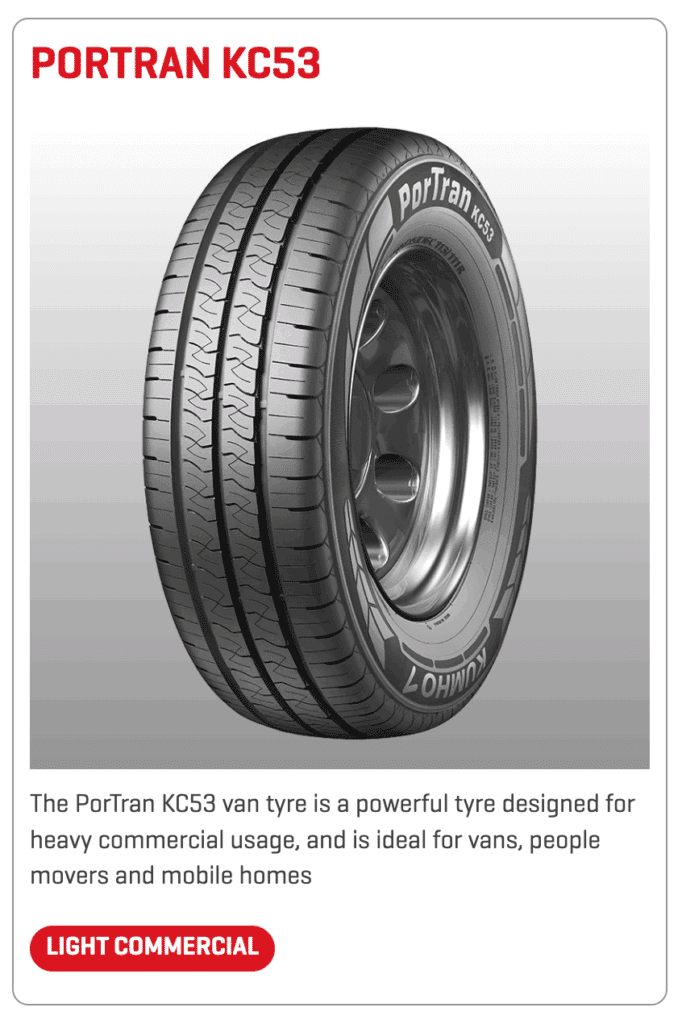
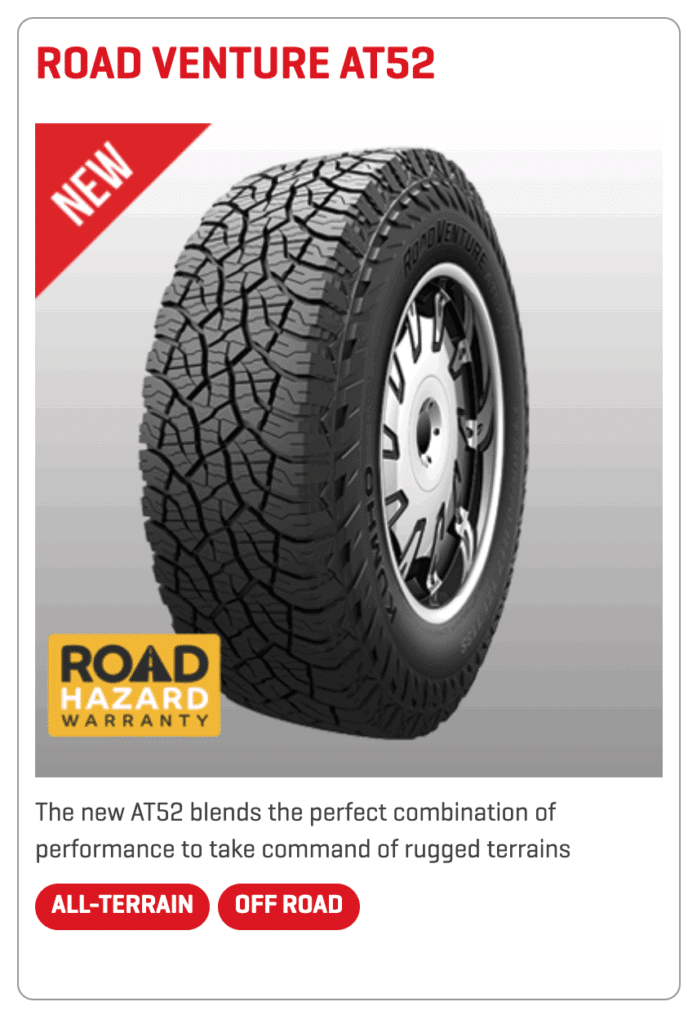
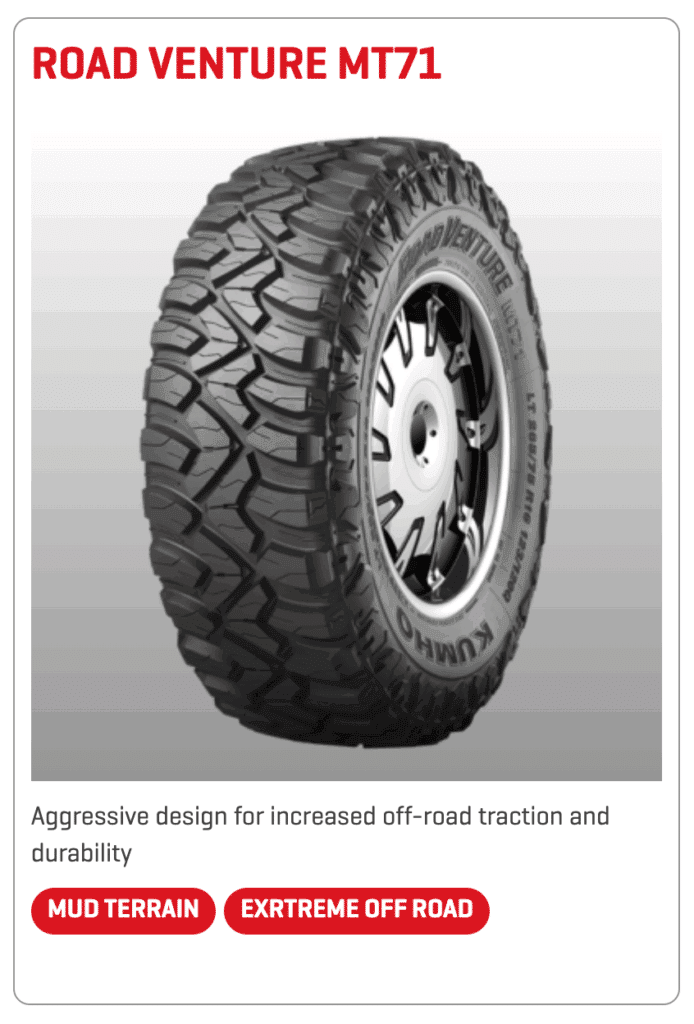
The PorTran KC53 is actually a minivan tyre, but quite good for caravans as they are optimised for strength and fuel efficiency, not noise and ride comfort, and that’s the tradeoff you want.
The AT52 are all-terrain tyres and the MT71 are mud-terrain tyres, the main difference being the gap between the blocks of tread is larger on the muddies. Tyre engineers will argue the differences are more complex, but that’s it in a nutshell.
I have not included any SUV tyres as those are not suitable for caravans; they focus on comfort, handling, noise and long tread life, none of which you really want for your caravan. Not even long tread life, as the tyres will most likely age out before they wear out.
So some advice – in the vast majority of cases, mud tyres on caravans are pointless as you simply won’t need their off-road grip, and a set of quality all-terrains will probably grip better than the cheap mud tyres supplied on most caravans.
There is less need for traction on the trailer, especially with single-axle caravans that will always have both wheels on the ground, unlike the 4×4 tow vehicle. The trailer also only needs to brake and laterally grip, not drive or steer, so it has less traction demand. So, for all these reasons, I suggest putting all-terrain tyres on a caravan, not mud-terrains. You’ll save money, reduce fuel consumption and have better on-road grip, particularly in the wet. And I say this after having done a lot of off-road towing, including designing and running training courses.

The main argument for mud tyres on a caravan is to match the tow car’s tyres, and that’s a valid point. What’s less valid is the argument that mud tyres are tougher. They may look tough but looks don’t necessarily reflect reality. A tyre’s toughness, load carrying capacity and puncture resistance comes from its constriction, not its tread pattern. For serious off-roading, what you want is an LT or Light Truck construction tyre. Again, it is possible to buy a stronger all-terrain tyre than a mud-terrain due to the construction.
So caravan tyres may not do exactly the same job as tow car tyres, but it’s close enough to use the same tyres as long as they’re high quality. I know tyres are a grudge purchase, but please don’t skimp on them because if you need to stop in a hurry, particularly in the wet, you’ll be very glad you have a set of tyres up to the job.